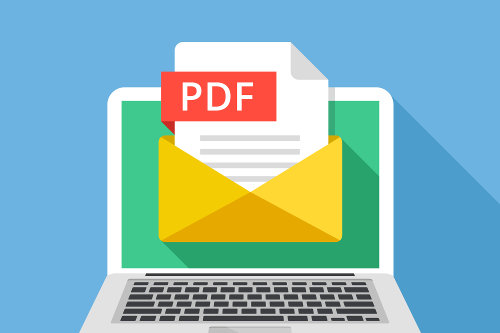We save files in many different formats all the time, but we never really question why we use certain formats for different files. What are the benefits of using a certain type of file format over another?

To better understand why we use different file formats for different types of documents and images, we’ll be taking a look at the different file formats and their benefits. Understanding file formats gives us a better understanding of their individual uses.
Five different file formats and their benefits
PDF files
PDF files were invented to bring a sense of uniformity to documents. People wanted a way for files to be read universally without losing their formatting whilst being able to be opened on any device.
You can use PDF files for any kind of document that you need to be read across countries without it being easy to edit. However, if you do need the document to be edited, this is simple to do. You can convert PDF to signable PDF in a few simple steps, meaning that files such as contracts are easily sent and signed without having to be downloaded, printed and scanned.
Not only is using a PDF beneficial to keep everything in the same format, it’s also a great way to protect the data you have in this file. PDF files can be easily encrypted so that they can only be opened by the intended audience.
PDFs are also smaller than other documents meaning they take up less space on your device whilst also taking less time to send over via email. This means they also open a lot quicker which is perfect if you need information fast.
Word document
Word documents are one of the most commonly used files which gives them an upper hand when it comes to availability. Most computers will have access to Word which means that there should be no problem opening documents that are sent in this format.
Word documents are also beneficial if you’re writing a certain style of report or letter as the formatting is there for you to use and simply fill in the missing parts.
However, it’s not very useful for spreadsheets or databases and can easily be edited by the recipient it’s sent to.
Hypertext markup language (HTML)
HTML is very easy to learn and follows basic rules that are not deviated from. It’s the easiest way to write for websites and is perfect for beginners learning about web design.
Another great benefit is that the software is free to use making it accessible to everyone. Every website uses HTML which makes it a universal website design language.
However, you do need a lot of coding to create even a simple website which can quickly become complicated. HTML is also only used for website design, so the skills and files are not transferrable to anything else.
Excel spreadsheet
Excel is the best type of file when it comes to organizing your data. You can easily build graphs and tables and calculate any long and complicated sums that would take forever to do manually.
It’s the perfect file to use in financial sectors and is widely used throughout the world. This makes it accessible for people no matter where you’re sending the file to.
However, as all of the information is based on human input, there is always room for human error. And when you’re dealing with a lot of data, this can be difficult to spot.
Text file (TXT)
Text files are probably the least used type of file. While it’s useful for writing down some quick notes or copying and pasting text written in different fonts and formats, there aren’t really any other uses for it.
All different file formats have their uses but when considering which one is best, recall the notes on each of these to see what is going to be most beneficial for your files purpose.